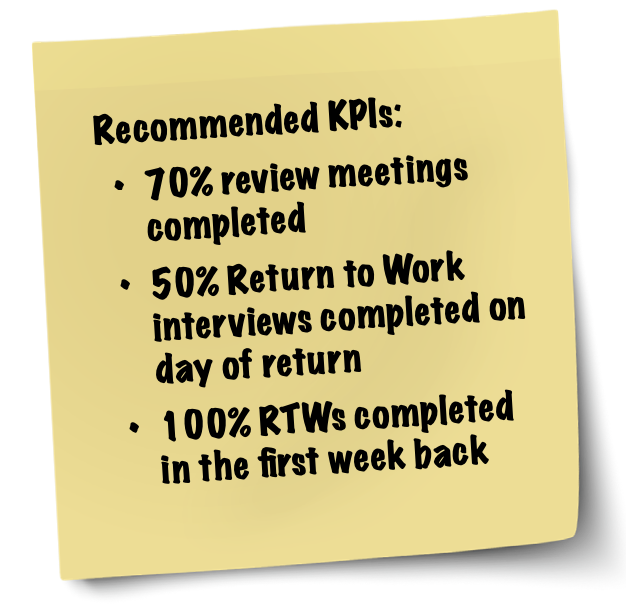Best practice absence policy: how to manage exceptions
Your absence policy should be a blueprint for managers to follow but not so rigid that there is no space for discretion. Discretion doesn’t mean that managers should be able to pick
and choose when to implement the policy. Quite the opposite, meetings and discussions should be held on all occasions.
Do: Allow for discretion
Discretion can be applied as a result of the review or welfare meeting, not before or instead of following the process. If discretion is applied, don’t forget to note down clearly why the exception was made and who took the decision.
Do: Document management actions
This leads neatly to the next point. A common mistake we see is that management actions have not been documented or that the piece of paper they were written on has been misplaced. Line managers have often had multiple conversations with an absent employee but there is no record of this in the personnel file. They may take a decision not to follow a formal disciplinary process, but the reason why is not known by anyone else – and in 6 months’ time the manager will have forgotten it too! There are 2 problem scenarios caused both by conscientious and less diligent managers:
1. A diligent manager does all the right things but doesn’t document it
Sometimes the line manager is doing a lot of good things to support an absent employee. They speak regularly and the manager has genuine interest for the employee’s welfare. They discuss return to work options and the manager explains what support the employer can offer. The manager promotes company benefits and support services that can help the employee recover.
Further along the line, for one reason or another, the case develops to later stages of a disciplinary or capability process and HR are trying to put together a case for terminating employment. Only they can’t find any evidence of all the good management actions that were taken! This means a lot of the work has to be done again and the process takes twice as long.
2. Disinterested manager ignores the policy
In the opposite scenario, the manager is not interested in engaging with the absence management process. Perhaps they feel it’s not really their job to manage absence. Or maybe they lack skills to confidently tackle these sometimes-difficult conversations. They may disagree with the company policy, or they’ve already decided that the employee in question is wasting everyone’s time.
Whatever the reason, these types of managers tend to try flying under the radar. They can be creative about following the company policy. For example, they decide to postpone a welfare meeting as long as possible. They choose not to have an absence review with someone who has hit the trigger point based on their own discretion – but don’t clearly document the basis of that decision. Even more commonly, their reason is not a valid one.
Don’t: Accept disregard for your policy
Consistent application of policies is crucially important for any organisation. “Free radical” managers who think they can choose to ignore the absence triggers can cause feelings of unfairness or favouritism among employees. Their behaviour also shows blatant disregard for the company policy, which will be sensed by their team. Management buy-in to the good attendance goals is crucially important for the success of your absence policy. Managers’ attitudes transfer to their teams, whether they realise it or not. So, get managers onboard early on and make your policy one they can buy into.
Ideally, senior managers’ performance review should include Key Performance Indicators (KPIs) linked to absence in their department or region. On the one hand, these should link directly to overall levels of attendance. On the other hand, they should also include expectations of when and how the absence policy is put into action. For example, over 50% dismissal rate for review meetings should be unacceptable. Managers should aim to arrange a welfare or review meeting within 4 weeks of a company trigger point being reached, where possible. The ‘Make it Simple’ guide does not go into detail about Return to Work interviews, but it is recommended that 50% of RTWs should take place on the employee’s first day back at work and 100% within the first week. Set easy targets for managers to aim for and include them in your policy.
This chapter is part of our “Make It Simple” Absence Policy series. If you’d like to learn more about writing a best practice absence policy, sign up to our newsletter for your free copy of the full eBook.

